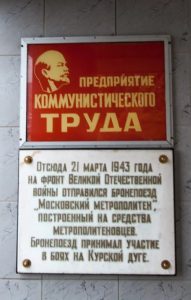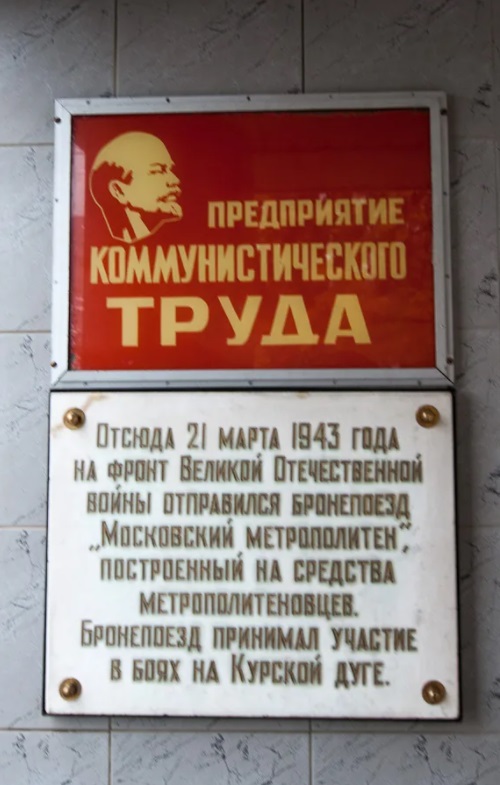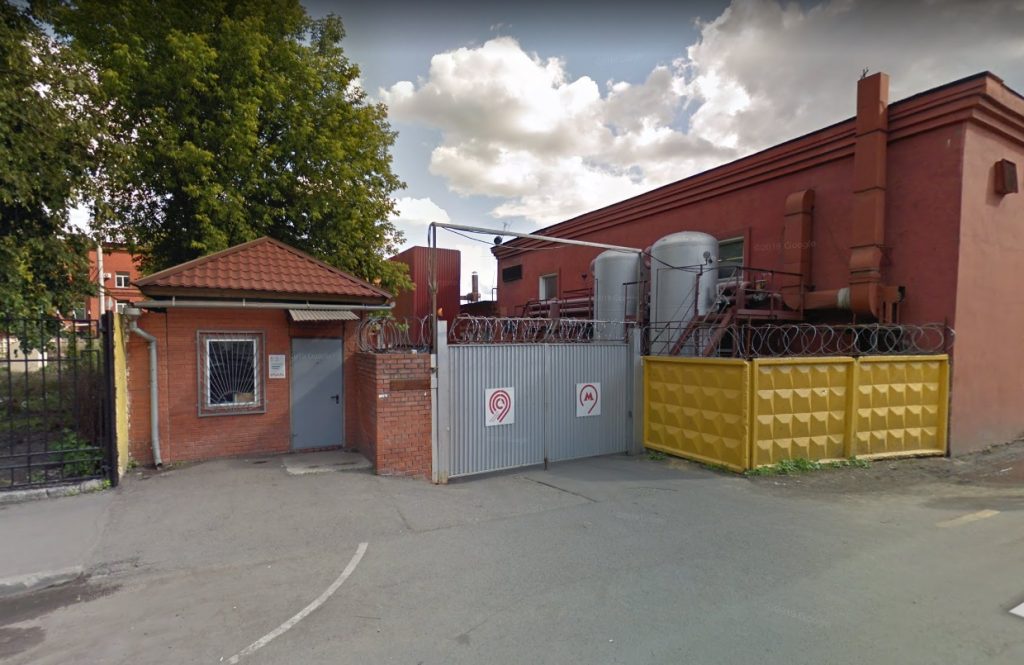Memorial plaque in honor of the departure of the Moscow Metro armored train to the front of the Great Patriotic War

The armored train “Moscow Metro” in 1943 was built using the money endowed by metro employees. It was a typical armored train for its time (type “BP-43”): an armored locomotive (type “Ov”) with a command post on a tender, surrounded by four armored platforms – two anti-aircraft and two artillery with turrets from T-34 tanks and machine guns for circular firing. There were also cover platforms with an emergency set of track structures. All this made the armored train a powerful and formidable weapon. The Germans wanted to encircle a large group of our armies concentrated on the ledge formed in the Kursk region – they wanted revenge for the defeat at Stalingrad. By July, neither side had a noticeable advantage in forces here. The Stavka decided to go on the defensive and, having exhausted the enemy, continue the offensive. It was at this defensive stage that the armored train of the separate 60th division of armored trains played its role: armored train No. 737 and the Moscow Metro, staffed mainly by employees of the Moscow metro who went to the front (there were 58 of them in the crew). The armored train was supposed to cover the section of the railway “Sazhnoye” – “Gostyshevo” – “Belomestnoye”. In fact, it was a 20-kilometer section of defence. The victory at the Kursk Bulge completed a radical turning point during the Great Patriotic War. Much later, in the sixties, after the last battle, which was led by the “Moscow Subway”, the Belgorod–Kursk railway line was electrified. Near the crossing in the southern alignment of the station “Sazhnoye” it was necessary to cut down a century-old oak tree, which interfered with construction. It was not possible to do this: the most powerful technique was powerless. The trunk of the tree was literally stuffed with fragments of enemy shells that had once fallen on an armored train.
Address: Moscow, Krasnoprudnaya str., 9A

